Mountain mint, specifically Pycnanthemum muticum, is a must-have for any garden. I’d rank it among the top recommendations. Before moving to Maine, I’d heard of mountain mint but hadn’t given it much thought. Someone described it as weedy and floppy, so I overlooked it. Now, I regret not trying it sooner.
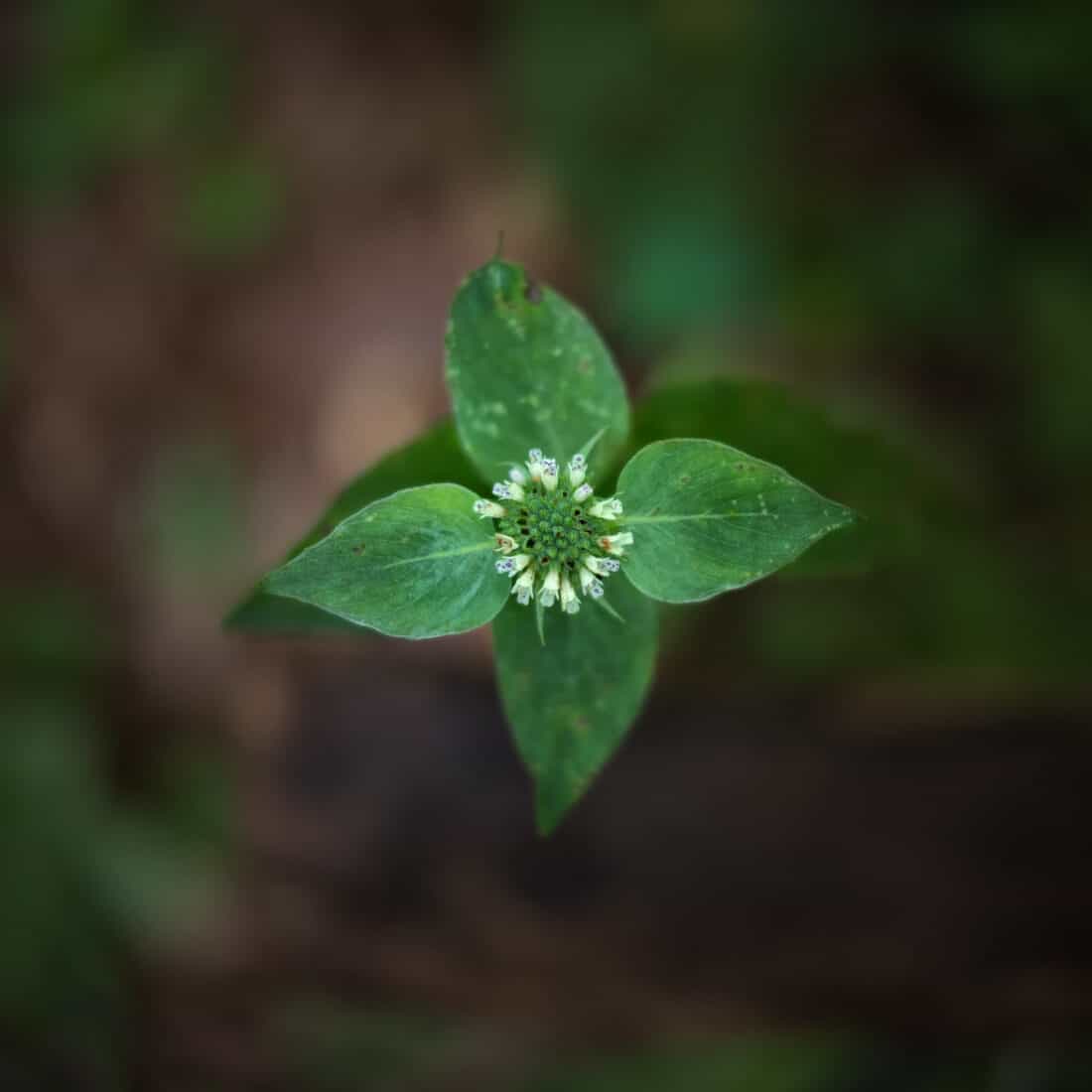
In this age when more and more gardeners of all levels are looking for good native plants, here is an herbaceous perennial native to most of the eastern US states, including Texas. It can tolerate periodic drought, is relatively pest resistant (including deer!), and pollinators love the flowers. On top of all of the good qualities of Pycnanthemum, the leaves also have a wonderful smell like peppermint oil.

The leaves contain the essential oil pulegone, which can act as an insect repellant. If you rub mountain mint on your skin, the pulegone oil from the leaves can help deter mosquitoes (and make you smell fresh!).
Mountain mint is used as a mild-flavored tea, and the leaves and buds are edible – often eaten in salads. I haven’t tried cooking or eating mountain mint myself – yet – I want to compare them to regular mint (mentha varieties) – I’ll report back.
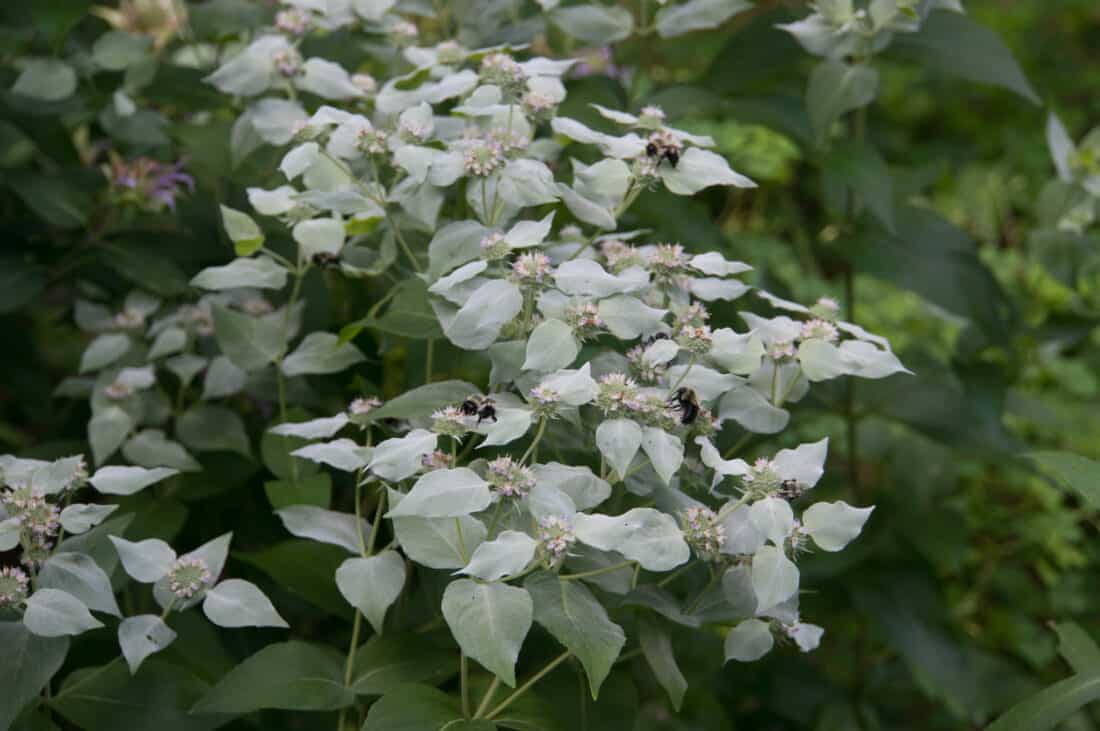
About Pycnanthemum muticum
Mountain mint has attractive, pointed leaves, and while the pink tubular flowers may be extremely small, their silvery bracts are beautiful when the plants are massed. Pycnanthemum muticum goes by the common name of clustered mountain mint because it is clump-forming, and it will spread underground (you will need to trim new shoots back in the spring to control its spread).
In Maine, we can plant our mountain mint in the full sun, but as you move southward, you probably want to give the plants more shade. Pycnanthemum can survive many different soil types but will do best in well-drained soils that stay moderately moist. If your soils are rich, loose, and moist, and not clay (i.e., perfect gardening soil), you definitely want to give Pycnanthemum muticum some room to run. The plant will spread, once established, via stolons that emanate from the main clump.
Mountain mint grows best in USDA hardiness zones 4-8, and again, I would recommend that you provide a bit more shade and moisture the higher the number of your hardiness zone.
As you begin to edit your garden this fall and think about changes for next year, be sure to consider adding mountain mint, as it is a wonderful native with a beautiful appearance and is great at attracting a wide range of insects to our pollinator garden, including our native butterflies.
– Rodney
Adding Mountian Mint – Plugs, Plants or Seed?
Nurseries like Prairie Moon and others are typically selling various plants from the pycnanthemum family by seed (buying a seed packet is the most economical way to grow them and it is how I intend to get started with this plant) as well as plugs and small tray cells.
It is also worth noting that Mountain mint – a native plant – is not the same as the peppermint and spearmint herbs that are often reviled for taking over a garden. Mentha plants (spearmint, peppermint, orange mint, lemon balm etc) are very aggressive and difficult to manage once they get a hold in a garden. Mountain Mint is not so aggressive.
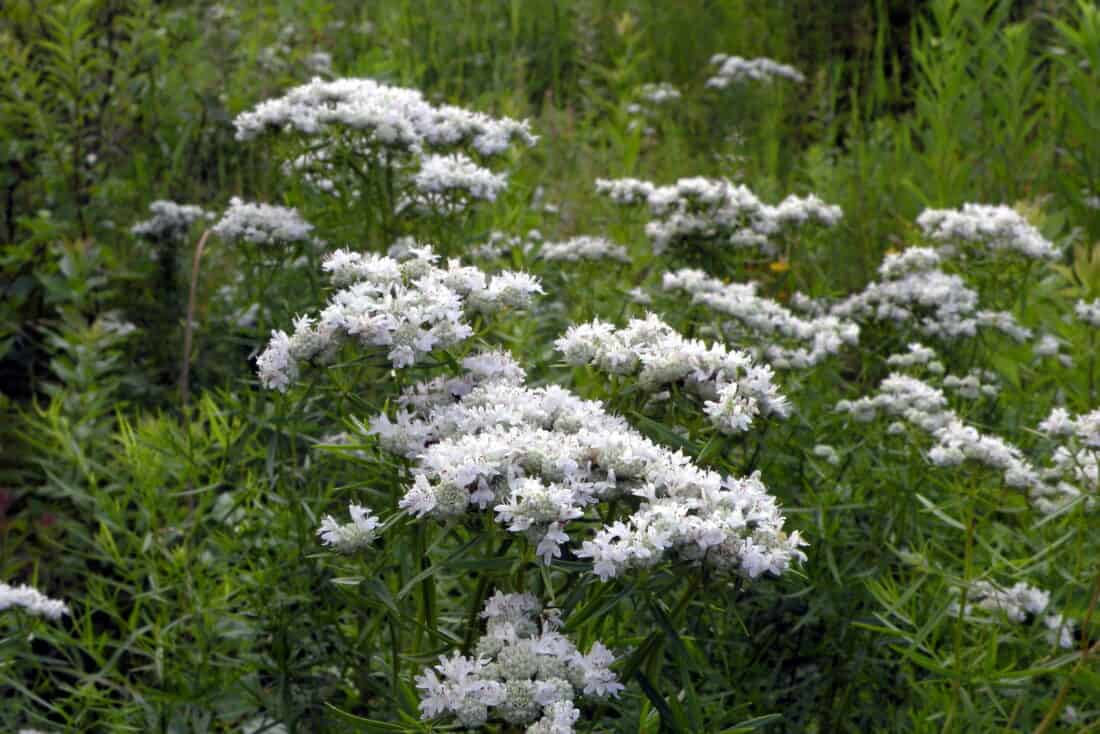
Varieties of Mountain mint (Pycnanthemum)
Mountain mint (Pycnanthemum) is a genus of flowering plants in the mint family (Lamiaceae) that includes several species commonly grown for their aromatic foliage and attractive flowers. Some popular species of mountain mint include:
- Pycnanthemum muticum (Short-toothed Mountain Mint):
- This species is native to eastern North America and is known for its square stems, lance-shaped leaves, and clusters of small, white to pale lavender flowers. It blooms from mid to late summer and attracts a variety of pollinators, including bees, butterflies, and beneficial insects.
- Pycnanthemum tenuifolium (Slender Mountain Mint):
- Slender mountain mint is native to eastern and central North America and is valued for its slender, aromatic foliage and clusters of tiny, white flowers. It blooms from mid to late summer and is a favorite of pollinators and wildlife.
- Pycnanthemum virginianum (Virginia Mountain Mint):
- Virginia mountain mint is native to eastern North America and is characterized by its narrow, lance-shaped leaves and clusters of small, white flowers with purple spots. It blooms from mid to late summer and is popular for its minty fragrance and wildlife-attracting properties.
- Pycnanthemum flexuosum (Appalachian Mountain Mint):
- This species is native to the Appalachian region of eastern North America. It is prized for its aromatic foliage and showy clusters of white flowers. It blooms from mid to late summer and is a valuable source of nectar for bees, butterflies, and other pollinators.
- Pycnanthemum verticillatum var. pilosum (Hairy Mountain Mint):
- Known for its dense, hairy foliage and whorls of small, white flowers, this variety of mountain mint adds texture and fragrance.
- Pycnanthemum incanum (Hoary Mountain Mint):
- The most drought-tolerant of the mountain mints. Pycnanthemum incanum features silvery foliage and clusters of pale lavender flowers, thriving even in dry, challenging conditions.
- Pycnanthemum californicum (Sierra Mint):
- Native to the Sierra Nevada mountains, this species of mountain mint boasts aromatic foliage and clusters of tiny white flowers. It attracts pollinators and adds a touch of California beauty to the garden landscape.
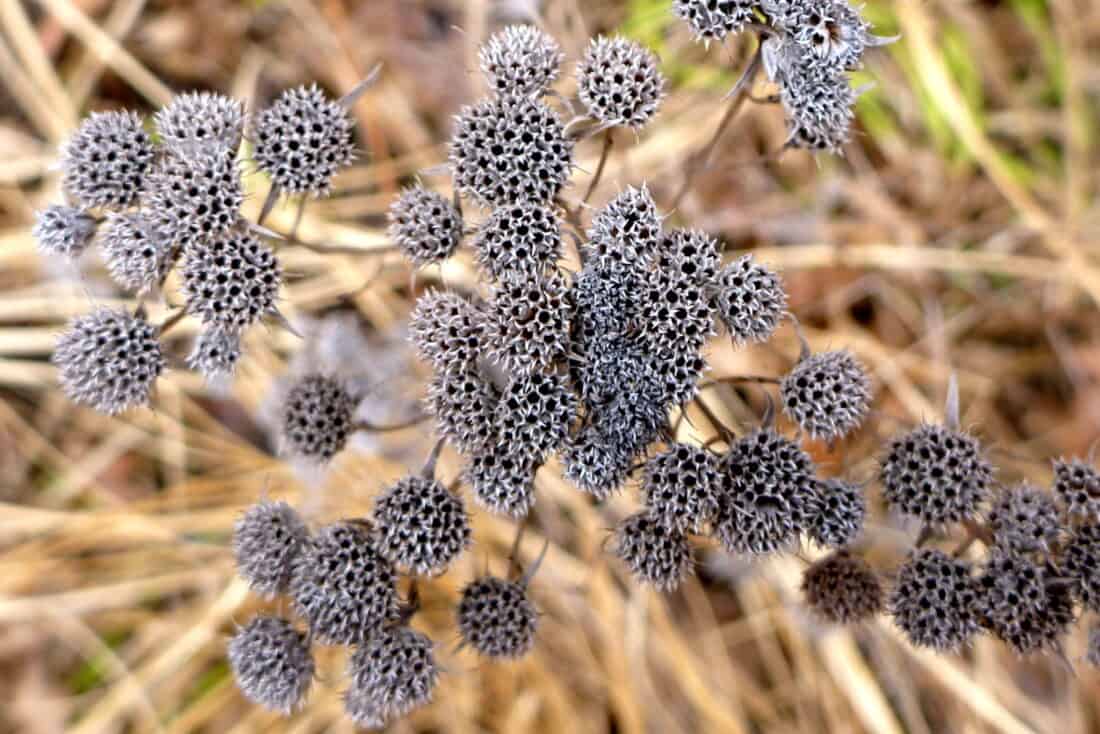
These are just a few examples of popular species of mountain mint commonly grown in gardens and landscapes. Each species offers unique characteristics and growing requirements, but all are valued for their beauty, fragrance, and wildlife-friendly qualities.
Companion plants for Pycnanthemum muticum (Short-toothed Mountain Mint):
Pycnanthemum muticum (Short-toothed Mountain Mint) is a great plant for naturalistic planting schemes. It is also a particularly good choice for gardeners who are trying to add more native plants to their gardens to help keep sustain a rich biodiversity and a thriving population of pollinators and insects. It blends well with other natives and naturalistic plants and you see it used often – typically as a striking foliage accent – in both wilder schemes and highly tended gardens.
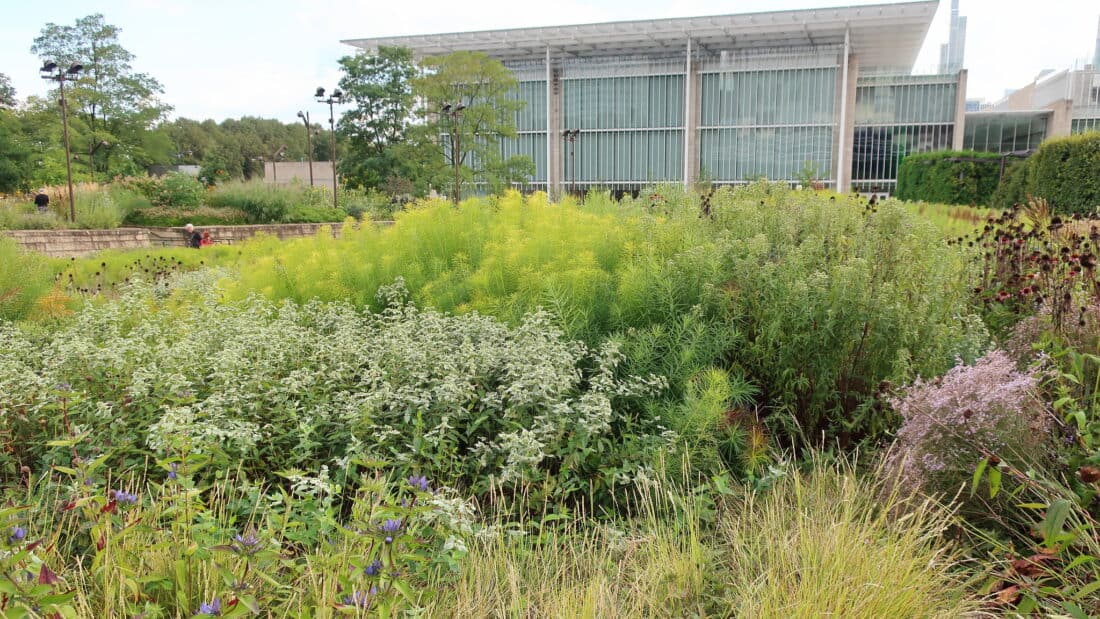
- Echinacea purpurea (Purple Coneflower):
- Purple coneflower is a native perennial with showy, daisy-like flowers in shades of purple, pink, and white. It blooms from midsummer to early fall and attracts pollinators like bees and butterflies, making it a perfect companion for Pycnanthemum muticum.
- Monarda fistulosa (Wild Bergamot):
- Wild bergamot is a native perennial known for its aromatic foliage and clusters of lavender-pink flowers. It blooms from mid to late summer and is highly attractive to pollinators, including bees, butterflies, and hummingbirds.
- Asclepias tuberosa (Butterfly Weed):
- Butterfly weed is a native perennial with vibrant orange flowers that bloom in summer. It is a favorite nectar source for butterflies and other pollinators and adds bright color and vertical interest to the garden, complementing the airy appearance of Pycnanthemum muticum.
- Agastache foeniculum (Anise Hyssop):
- Anise hyssop is a perennial herb with aromatic leaves and spikes of lavender-blue flowers. It blooms from midsummer to early fall and attracts bees, butterflies, and hummingbirds to the garden. Its upright growth habit and fragrant foliage make it an excellent companion for mountain mint.
- Solidago spp. (Goldenrod):
- Goldenrod is a native perennial with bright yellow flower spikes that bloom in late summer and fall. It is highly attractive to pollinators and adds vertical interest and late-season color to the garden, complementing the blooms of Pycnanthemum muticum.
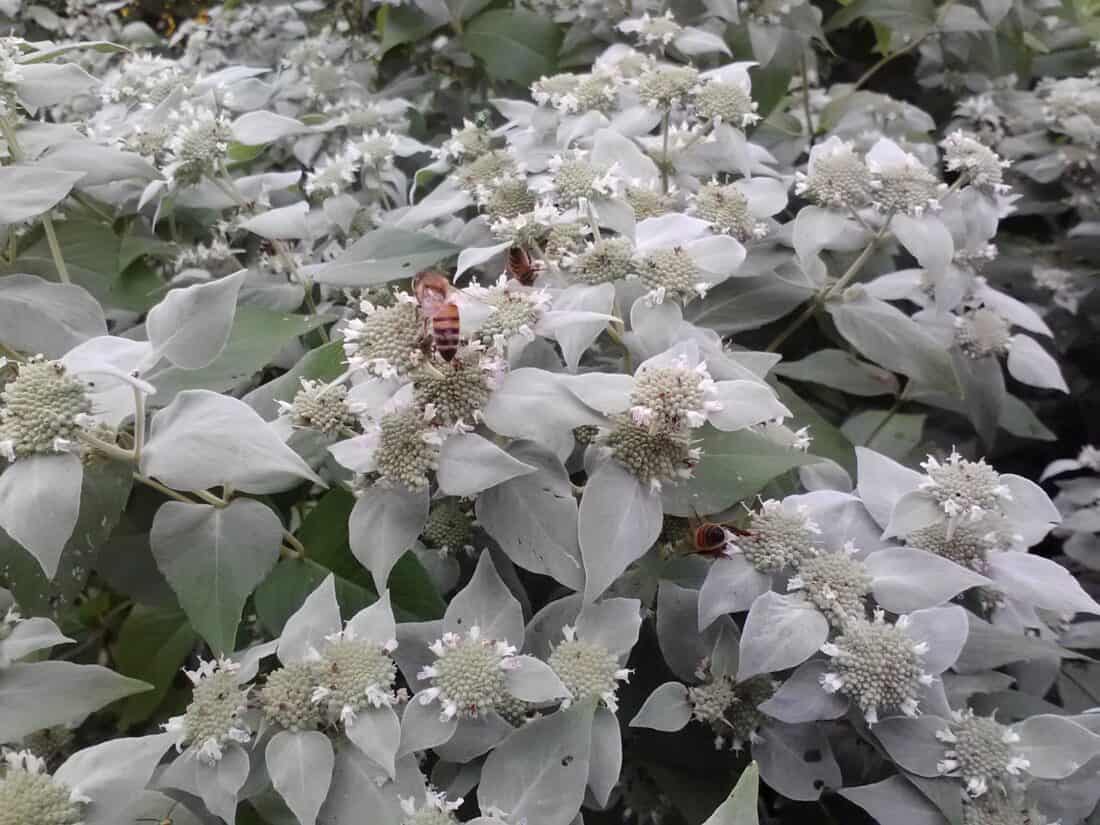
Ooooh, we have a native version out here in California – Pycnanthemum californium – that has many of the same delightful characteristics. Super beautiful.
http://www.laspilitas.com/nature-of-california/plants/pycnanthemum-californicum
Cool, Susan! I will check it out and maybe give it a try. We ordered from Las Palitas earlier this year.
Rodney – I’ve never heard of this plant…..must try!
You will love it, Rochelle! – re